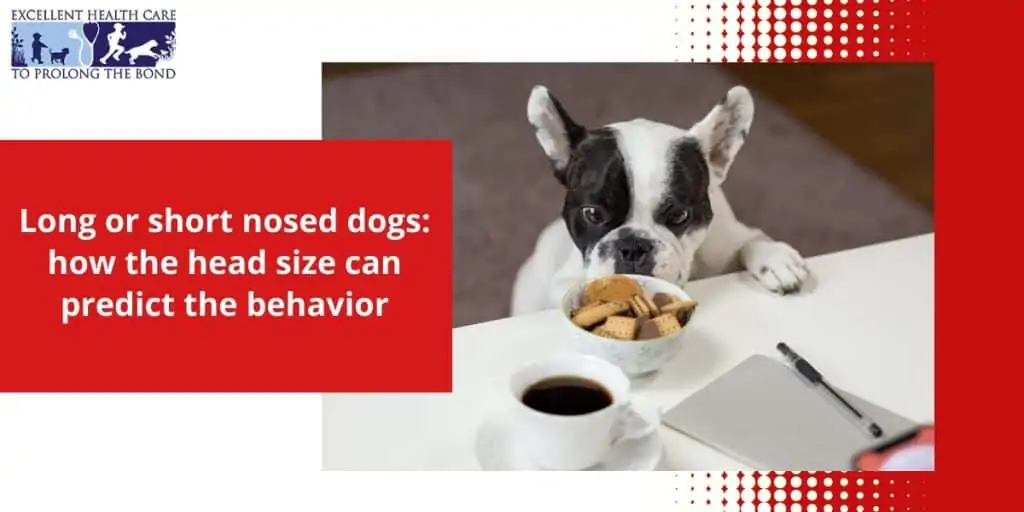
Predicting the behavior of dogs based on their size has been a challenge. However, recent researches have unveiled a relation between the behavior of dogs with respect to their appearance, especially their height, weight, and head shape.
Most of the researches conducted across the globe were interestingly featured around the height, weight and the head shape of the dogs.
These factors were analyzed and benchmarked against different behavioral scenarios.
While the factors height and weight don’t need much explanation, the shape of the dog’s head involves various factors.
Head shape of dogs
Dogs are commonly observed with three head shapes:
- Dolichocephalic: Long-headed, eg: Greyhound
- Brachycephalic: Short-nosed/headed, eg: Pug or boxers
- Mesocephalic: Intermediate head length, eg: Labrador
For reference, we are listing some of the popular short head, long head and intermediate head dogs here:
Long head dogs:
- Afghan Hound
- Airedale Terrier
- Basset Hound
- Bedlington Terrier
- Bloodhound
- Borzoi
- Bull Terrier
- Cesky Terrier
- Dachshund
- Doberman Pinscher
- English Bull Terrier
- German Shepherd
- Great Dane
- Greyhound
- Ibizan Hound
- Irish Wolfhound
- Italian Greyhound
- Manchester Terrier
- Miniature Bull Terrier
- Pharaoh Hound
- Poodle
Short nosed or brachycephalic dogs:
- Affenpinscher
- American Pit Bull Terrier
- American Staffordshire Terrier
- Boston Terrier
- Boxer
- Brussels Griffon
- Bulldog
- Bullmastiff
- Cavalier King Charles Spaniel
- Chow Chow
- Dogo Argentino
- Dogue de Bordeaux
- English Mastiff
- French Bulldog
- Japanese Chin
- King Charles Spaniel (or English Toy Spaniel)
- Lhasa Apso
- Neapolitan Mastiff
- Newfoundland
- Pekingese
- Pug
- Shar-Pei
- Silky Terrier
- Tibetan Spaniel
- Yorkshire Terrier
Intermediate head dogs:
- Alaskan Malamute
- American Cocker Spaniel
- Australian Cattle Dog
- Australian Shepherd
- Basenji
- Beagle
- Bearded Collie
- Beauceron
- Belgian Malinois
- Belgian Sheepdog
- Bernese Mountain Dog
- Bichon Frisé
- Black and Tan Coonhound
- Border Collie
- Border Terrier
- Brittany Spaniel
- Cairn Terrier
- Cardigan Welsh Corgi
- Chesapeake Bay Retriever
- Chinese Crested
The head shape of the dogs were found to be directly proportional their temperament.
It was found that the wide skulled or short nosed dogs were more attached and loyal to their owners. The brachycephalic dog breed liked direct human interaction and attention.
However, dogs belonging to this breed proved to be extra defensive while facing situations, which they found hard to comprehend. For instance, coming across strangers or individuals dressed like a ghost.
Additionally, this breed seems to have lost their hunting traits and is more puppyish in nature. It was also found that as the height of the dogs decrease, the behavioral issues like mounting, owner aggression and attention seeking heightened.
The long headed or the dolichocephalic dogs on the other hand seemed to be less likely to bond with strangers or engage in object play. These dogs proved to better in handling unfamiliar or startling situations.
The bottom line of the study can be summarized as the following:
The height, weight and head size of dogs are proportional to some behavioral aspects like temperament, sociability, and affection. As a pet parent, you need to consider these factors, especially when you are adding a bringing a new dog to your family. Doing so will ensure that you handle the situation and shape your dog’s behavior in the best possible manner.
